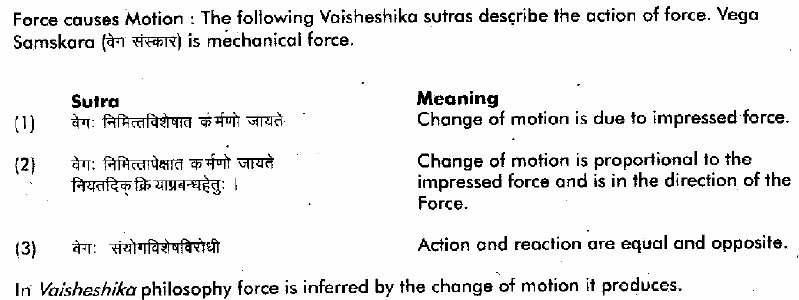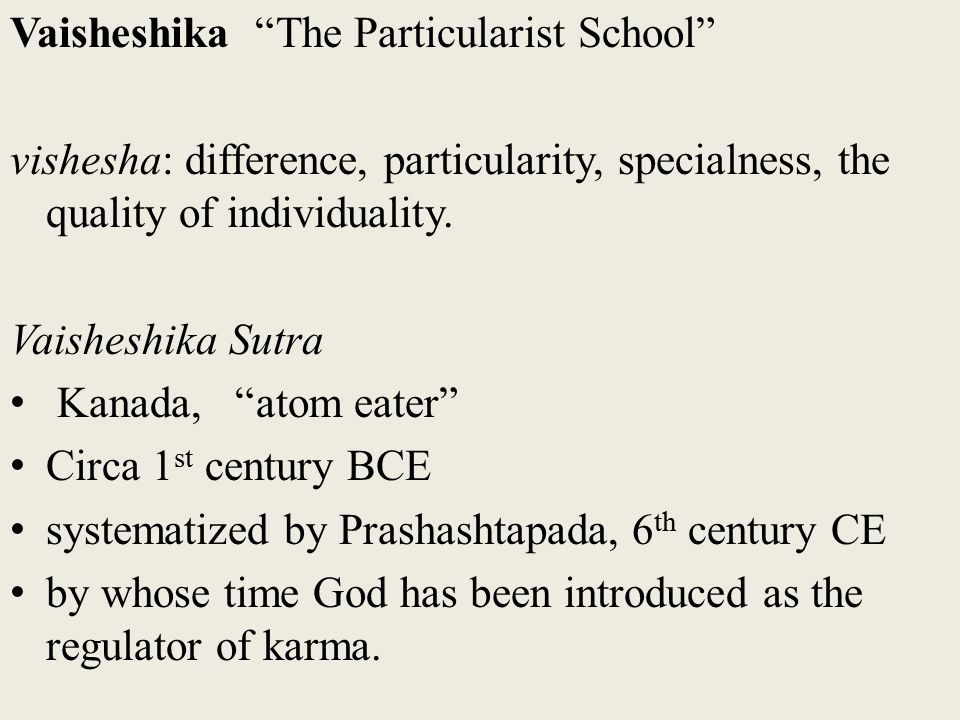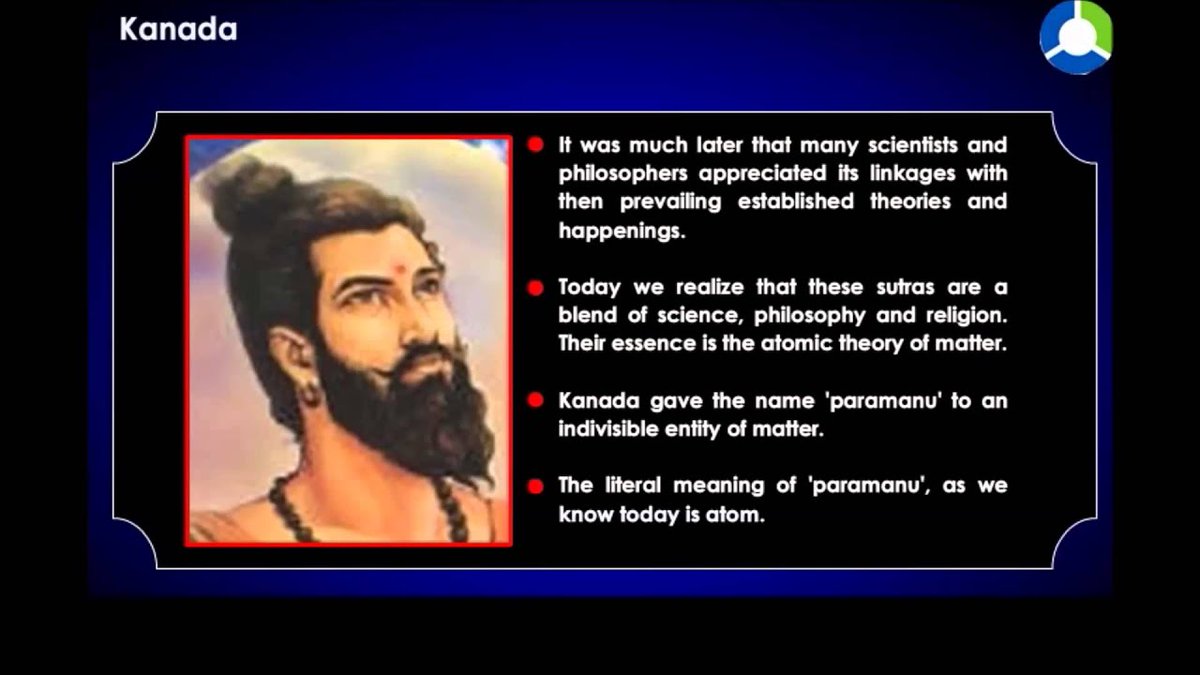कणाद
Before newton discovered laws of motion,
Indian scientist and philosopher Kanada (कणाद) had given Vaisheshika Sutra (in 300 BC) which describes relation between force and motion etc.
Vaisheshika (Sanskrit: वैशॆषिक) is one of the six Hindu schools of philosophy of India.
Before newton discovered laws of motion,
Indian scientist and philosopher Kanada (कणाद) had given Vaisheshika Sutra (in 300 BC) which describes relation between force and motion etc.
Vaisheshika (Sanskrit: वैशॆषिक) is one of the six Hindu schools of philosophy of India.
कणाद was an ancient Indian natural scientist and philosopher who founded the Vaisheshika school of Indian philosophy that also represents the earliest Indian physics.
His traditional name "Kanada"(कणाद) means "atom eater"
His traditional name "Kanada"(कणाद) means "atom eater"
Here are the Vaisheshika Sutras which describe the relation between force and motion :
1) वेगः निमित्तविशेषात कर्मणो जायते |
Meaning : Change of motion is due to impressed force.
1) वेगः निमित्तविशेषात कर्मणो जायते |
Meaning : Change of motion is due to impressed force.
2) वेगः निमित्तापेक्षात कर्मणो जायते नियतदिक क्रियाप्रबन्धहेतु |
Meaning : Change of motion is proportional to the impressed force and is in the direction of the force.
Meaning : Change of motion is proportional to the impressed force and is in the direction of the force.
3) वेगः संयोगविशेषविरोधी |
Meaning : Action and reaction are equal and opposite.
Meaning : Action and reaction are equal and opposite.
Vaiśeṣika Sutras states:
There are nine constituents of realities:
four classes of atoms (earth, water, light and air),
space (akasha),
time (kāla),
direction (disha),
infinity of souls (Atman),
mind (manas).
There are nine constituents of realities:
four classes of atoms (earth, water, light and air),
space (akasha),
time (kāla),
direction (disha),
infinity of souls (Atman),
mind (manas).
Every object of creation is made of atoms (paramāṇu) which in turn connect with each other to form molecules (aṇu).
Atoms are eternal, and their combinations constitute the empirical material world.
Atoms are eternal, and their combinations constitute the empirical material world.
Individual souls are eternal and pervade material body for a time.
There are six categories (padārtha) of experience — substance, quality, activity, generality, particularity, and inherence.
Several traits of substances (dravya) are given as colour, taste, smell, touch, number, size, the separate, coupling and uncoupling, priority and posterity, comprehension, pleasure and pain, attraction and revulsion, and wishes.
Thus the idea of subdivision is carried further to analytical categories as well, which explains its affinity with Nyaya.

 Read on Twitter
Read on Twitter




